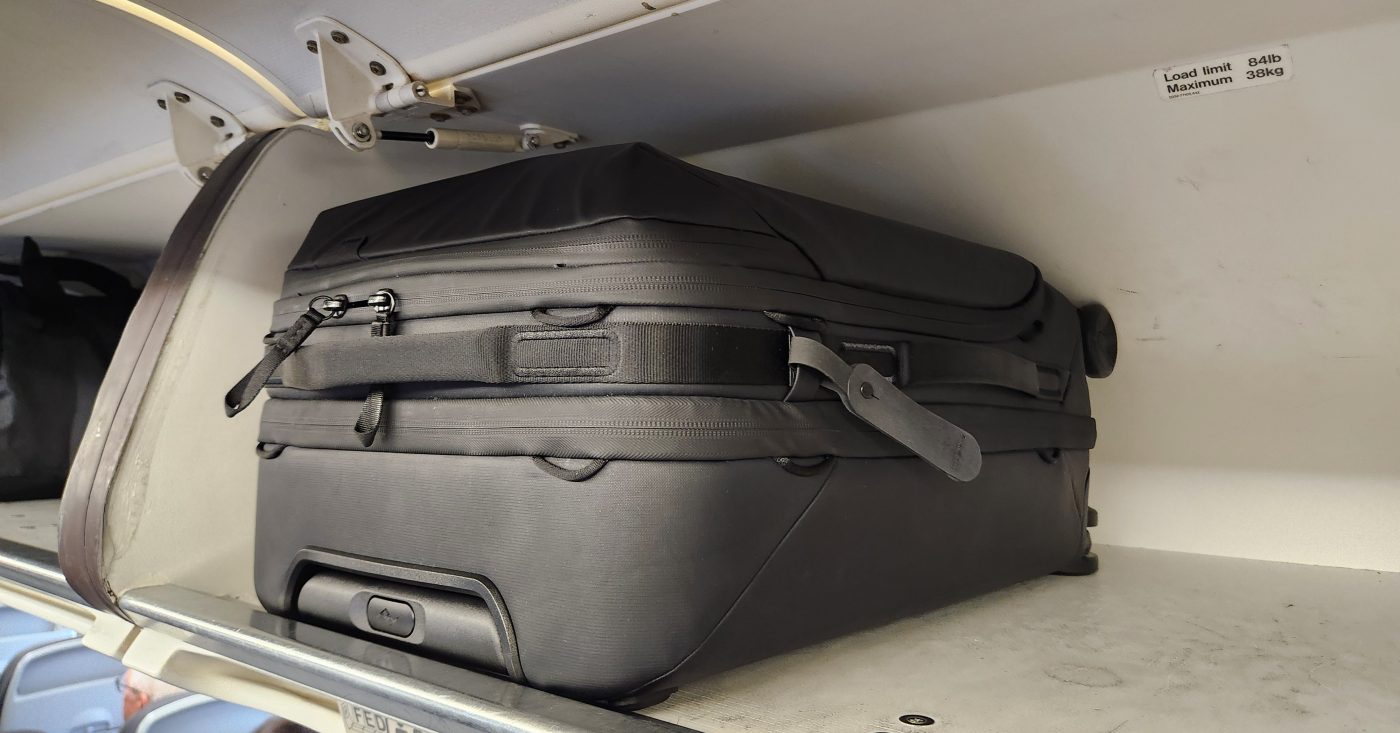In this article, I will discuss my long-term experience with Peak Design’s newly released Roller Pro suitcase.
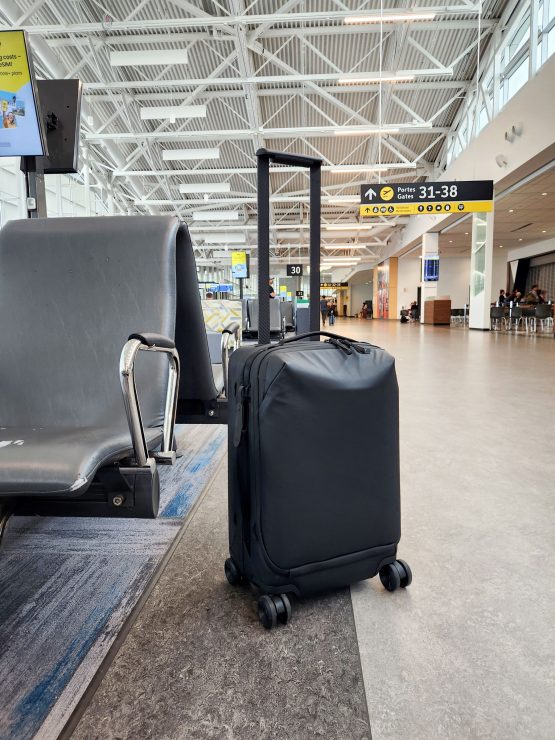
The Roller Pro is a carry-on-sized suitcase that’s useful both for travelers and photographers. I presented it in detail in a previous article. The quality of its design, craftsmanship, ruggedness, and capacity had impressed me.
Over the last few months, I have had the chance to thoroughly use and test the Roller Pro in a variety of situations, both as a photographer and as a traveler. Read on to learn about my experience and how I liked the Roller Pro!
As a Photography Bag
I used the Roller Pro for several on-location photoshoots. Each time, I used the suitcase to carry my camera, lenses, flashes, holders for modifiers (umbrellas and softboxes), chargers, plus some odds and ends. The XL camera cube was added to the Roller Pro to protect my gear.
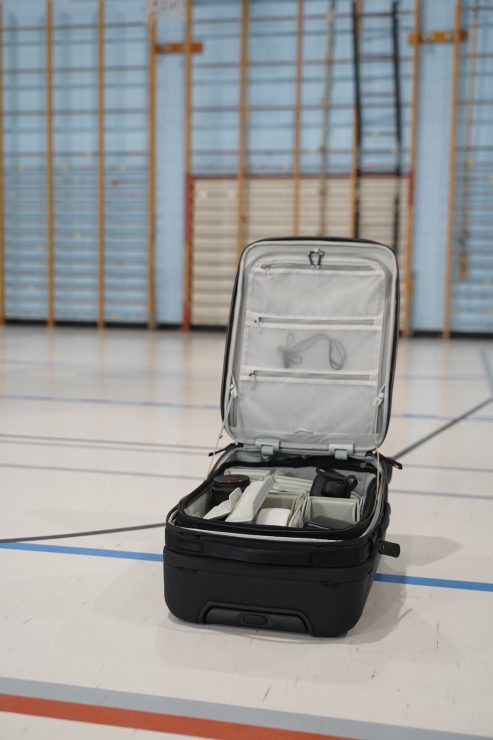
I used a Sony A7C, a Tamron 28–75mm F2.8, and a Tamron 70–180mm F2.8. Lights were typically Godox AD200Pro II, AD100Pro, V100, and V860 III.
My whole setup stretched the Roller Pro to its capacity limit. Folding the top panel allowed me to place some items vertically, saving space while preserving protection. Other large-volume camera bags (even other Peak Design bags such as their Travel Backpack) do not offer this possibility. If even more vertical space is needed, the suitcase expands.
The number of dividers was, in all cases, more than enough to protect and organize all my gear.
I’m more used to using backpacks or padded duffels to carry gear on location. A rolling suitcase was a welcome improvement: while it did not free my hands as a backpack does, photo gear is typically heavy and quickly gets uncomfortable. The Roller Pro let me bring more equipment without worrying about the weight.
I enjoyed the sturdiness of the suitcase, how tough the telescopic handle is, and how smoothly the wheels roll. The Roller Pro exudes quality and should be extremely durable.
The drawbridge opening was an unexpectedly useful feature, for many reasons. First, it really takes up less space than other suitcases. That’s truly useful in tight spaces. Second, the zippered pockets on the top panel are excellent for storing and quickly finding smaller items. The rigidity of the top flap also allowed me to carry and protect documents, checklists, and schedules.
In summary, as a photographer’s bag, the Roller Pro did not let me down. It was not a revolution, but it made the process more enjoyable than any other bag I have used to go on location with a lot of gear.
As a Travel Suitcase
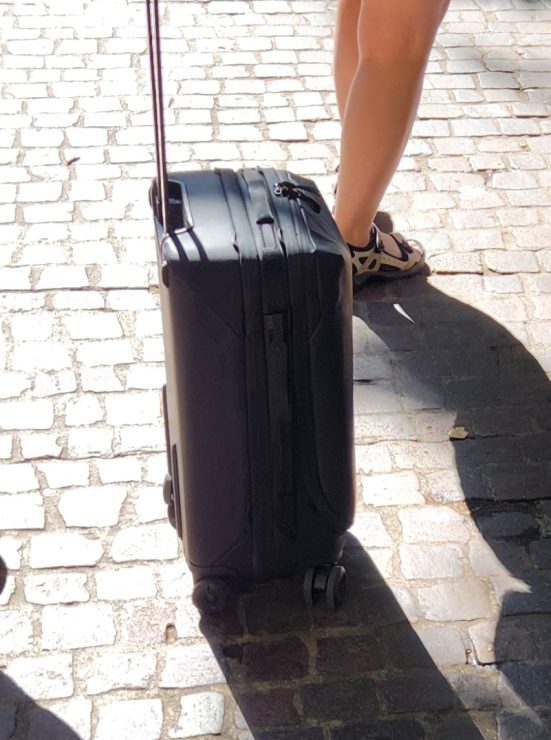
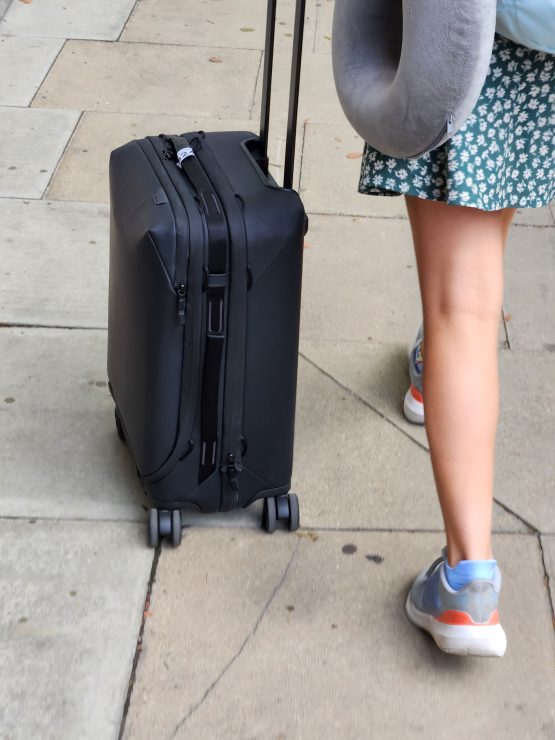
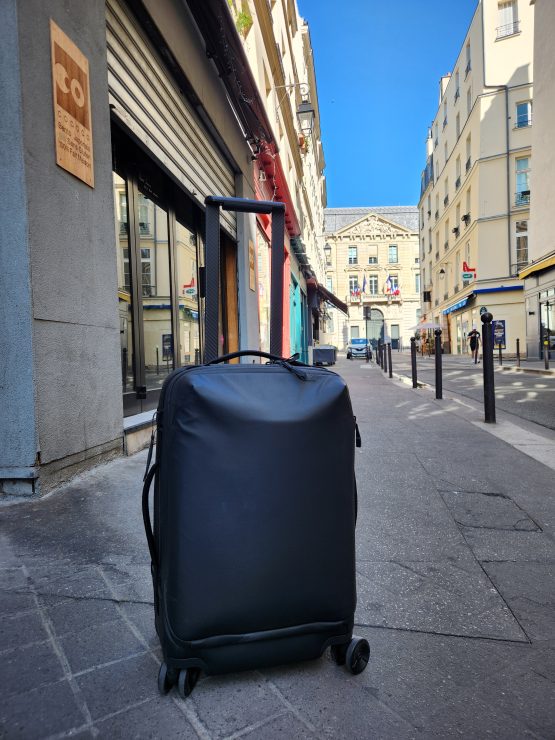
Over the course of many outings, including a three-week trip, I used the Roller Pro extensively as a travel suitcase. It saw the inside of four planes, took the subway in Paris and London, traveled via double-decker commuter trains and the Eurostar, and was thrown into the trunk of a cab. It rolled on Paris’ cobbled streets, hotel carpets, old floorboards in an Airbnb, tiled London sidewalks, concrete and asphalt, escalators and regular stairs, dirt roads, and grass fields. It was checked for size in airports. It carried other bags over the telescopic handle. It visited a fancy resort in Quebec’s countryside.

The suitcase visited a cramped London hotel, a tiny room at Disneyland Paris—the list goes on. It also traveled alongside three other suitcases of different sizes and from different manufacturers. In short, it lived through a lot and was thoroughly tested.
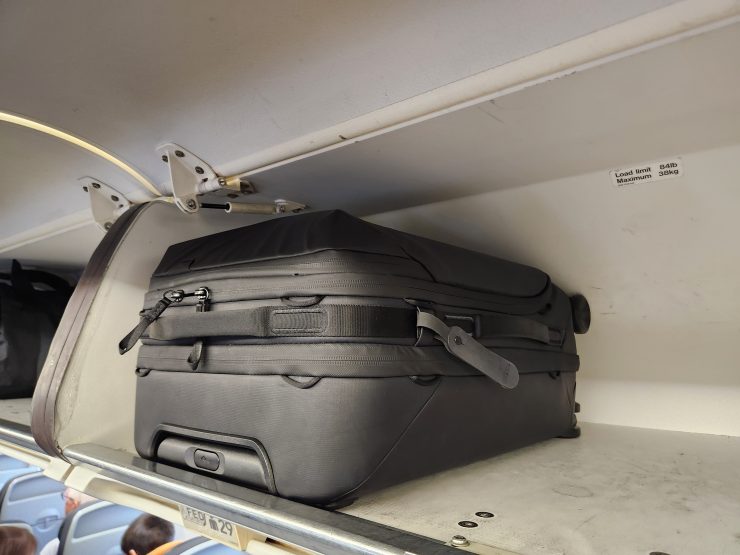
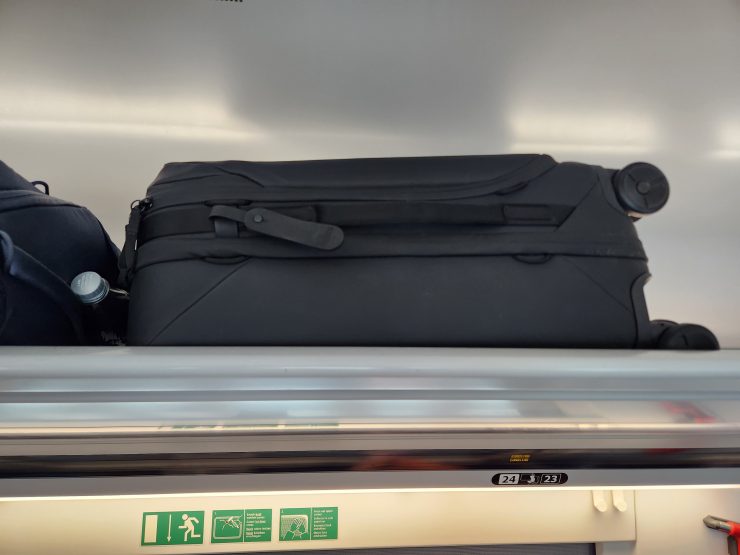
To cut to the chase, the Roller Pro is by far the best travel suitcase I have ever used.
Let’s start with the wheels. Their larger diameter makes it much easier to roll over uneven surfaces. European streets are a good stress test for any rolling suitcase; the Roller Pro performed much better than the other suitcases we used—so much so that our kids argued over who would have the privilege of carrying it.
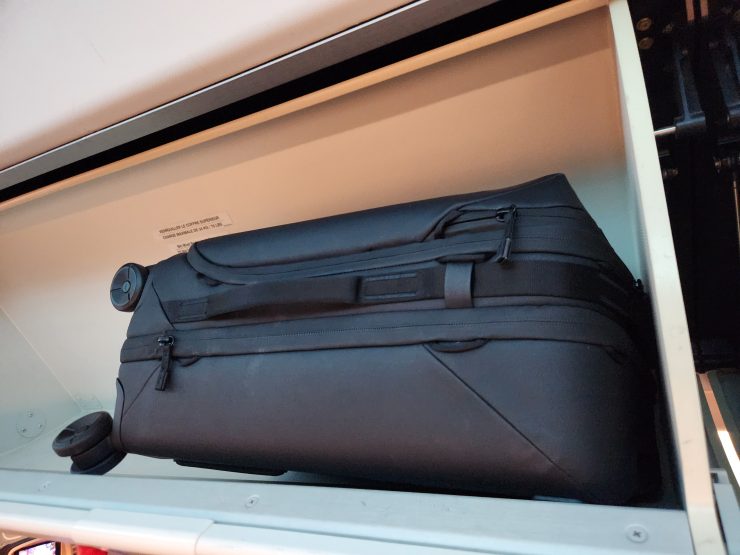
In my original review, I mentioned that the wheels tend to prevent the Roller Pro from laying perfectly flat. That observation still holds. It was sometimes annoying to try to insert the suitcase into the small overhead bin on a plane. I actually had to manually rotate the wheels to position the suitcase properly, earning an annoyed look from a flight attendant and a question about the Roller Pro’s compliance with maximum size allowance.
The carbon fiber telescopic handle is another strong point of the Roller Pro. It’s more solid than any other I’ve used, and its slim profile makes a real difference when packing. It drew a few curious looks from fellow travelers.
The mix of a fabric exterior with a hard internal shell is an excellent design choice. It allows the suitcase to bend slightly and adapt its shape to tight spaces, while still protecting its contents.
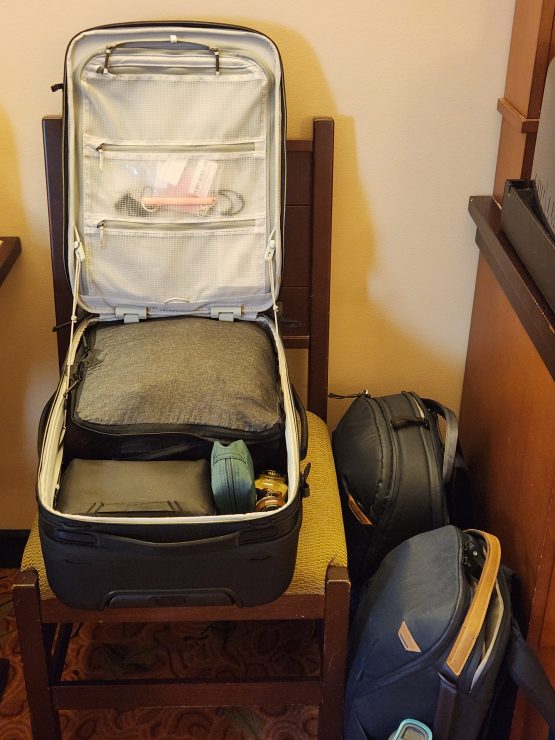
The drawbridge opening truly came in handy in small hotel rooms. We had to fully unpack our other suitcases and then store them, but we could keep the Roller Pro packed with its contents easily accessible. This made our lives much simpler. It was also easy to store it underneath counters and tables if we wanted it upright.
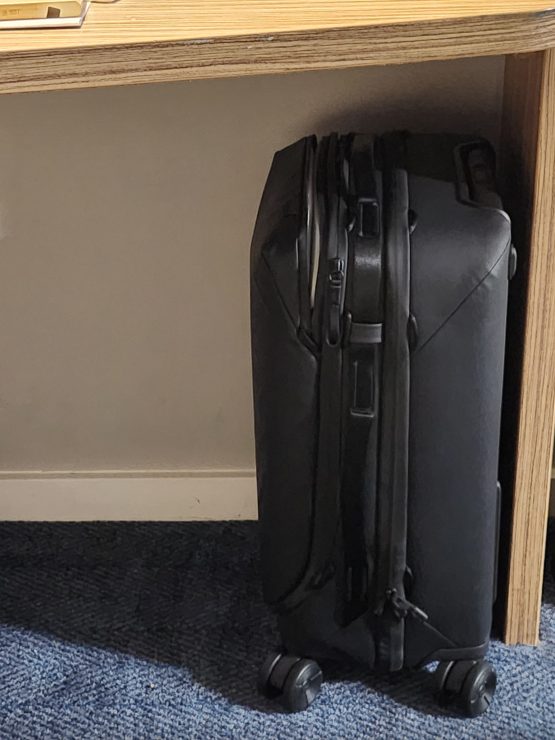
Not many suitcases offer a dedicated laptop or tablet compartment, and even fewer make it easily accessible like the Roller Pro does. This was another benefit during our travels. I did not bring a laptop, but used this compartment to sort travel documents, reservations, and proofs of purchase (I always bring printed backup copies) as well as a large tablet and a pen.
The hidden passport pocket was another useful feature. Most of the time, we didn’t have access to a safe, so this truly hidden storage gave us peace of mind. We stored a wallet and four passports away from prying eyes.
The Roller Pro can bulge when overfilled—something I had to be careful about. We were asked to test its size at the airport, and it was a really tight fit. The Roller Pro did comply with our North American airline, but if it had been filled even a bit more (or expanded), we would have had to check it.
During all my time with the suitcase, I did not once strap anything to the outside. On paper, having the possibility to attach a tripod or pouch to the external loops seems like a fantastic idea. However, on public transport it’s not realistic because of size constraints.
Durability
During this trip, I was not able to gate-check the Roller Pro and see how it survives being loaded onto a plane. However, it was bumped, scraped, dropped, flipped, and generally roughly handled.
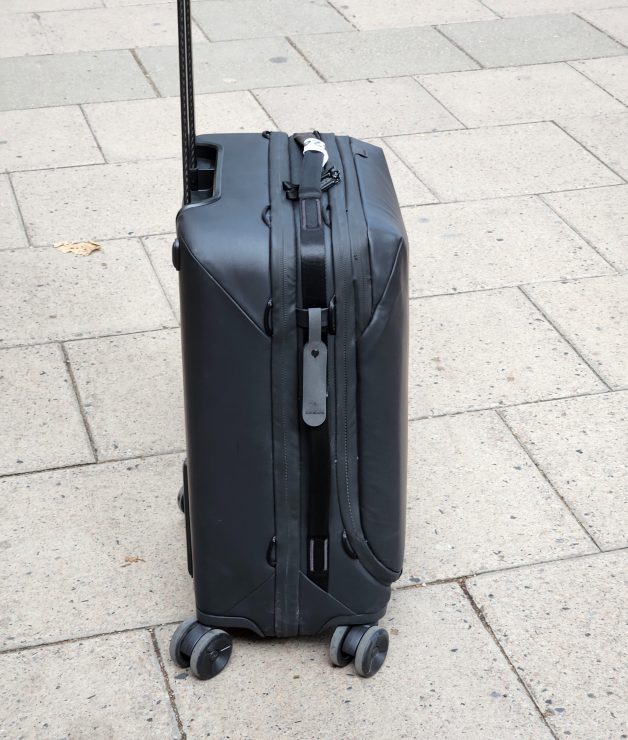
The wheels still roll as if they were brand new. They did not collect dirt, small rocks, or anything that would prevent their operation. The telescopic handle also did not suffer any damage or degradation during use, despite having been used to lift the whole suitcase and carry extra luggage on many occasions.
The external fabric does not look perfectly new, but very nearly so. I was worried that it would easily scuff or mark, but that has not been the case. I’m pleasantly surprised by its durability.
On the inside, the Roller Pro looks absolutely pristine. It’s easy to keep clean, and the solid shell is much more enjoyable to use than the typical loose fabric found in most suitcases.
Conclusion
I liked going on location as a photographer with the Roller Pro. Even more, I loved traveling with it.
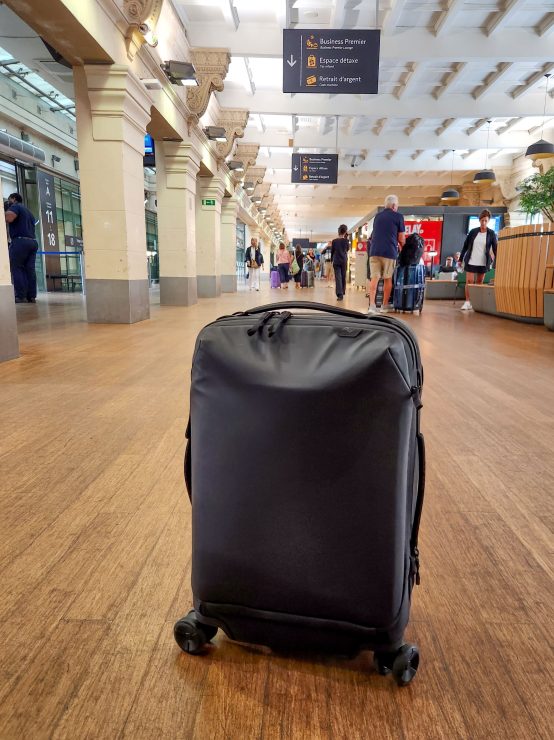
As a photography bag, it does everything right and offers a bit more volume than most comparable bags, but it does not break new ground. It is without a doubt excellent, but also quite expensive when compared with other options. One benefit (that I didn’t use) is how easy it is to strap pockets, pouches, or even tripods to the outside.
The suitcase truly shines for travel. All of its unique features are genuinely beneficial and make travel more enjoyable—and simply easier. It particularly excels when compared side by side with more traditional (and cheaper) suitcases.
I do have a gripe with how the wheels tend to pivot downwards when the suitcase is flat. It’s mildly annoying in a hotel room but bothersome when placing the Roller Pro in a small plane’s overhead compartment.
The Roller Pro is a luxury product at a fraction of the price of a luxury brand. While in Paris, I took the time to visit some high-end stores and look at their luggage; I would not have traded my Roller Pro for any of their (even more expensive) options.
Peak Design’s suitcase is still more expensive than typical luggage. In addition to its better design, it comes with a true lifetime warranty. (Suitcases often come with decades-long warranties, but these have a lot of fine print and are rarely applicable). Peak Design is a Bluesign-certified, ethical company; this matters to many people and can justify a higher price.
Looking at the success of the Roller Pro’s Kickstarter campaign, there appear to be a lot of people willing to pay a premium for what Peak Design offers. Having used the Roller Pro as I have, I can understand why.
Where Can You Get the Peak Design Roller Pro?
Now that the Roller Pro is outside of its Kickstarter phase, it is widely available at about $599
- Direct from Peak Design’s Website
- B&H Photo
- Adorama
- Amazon

